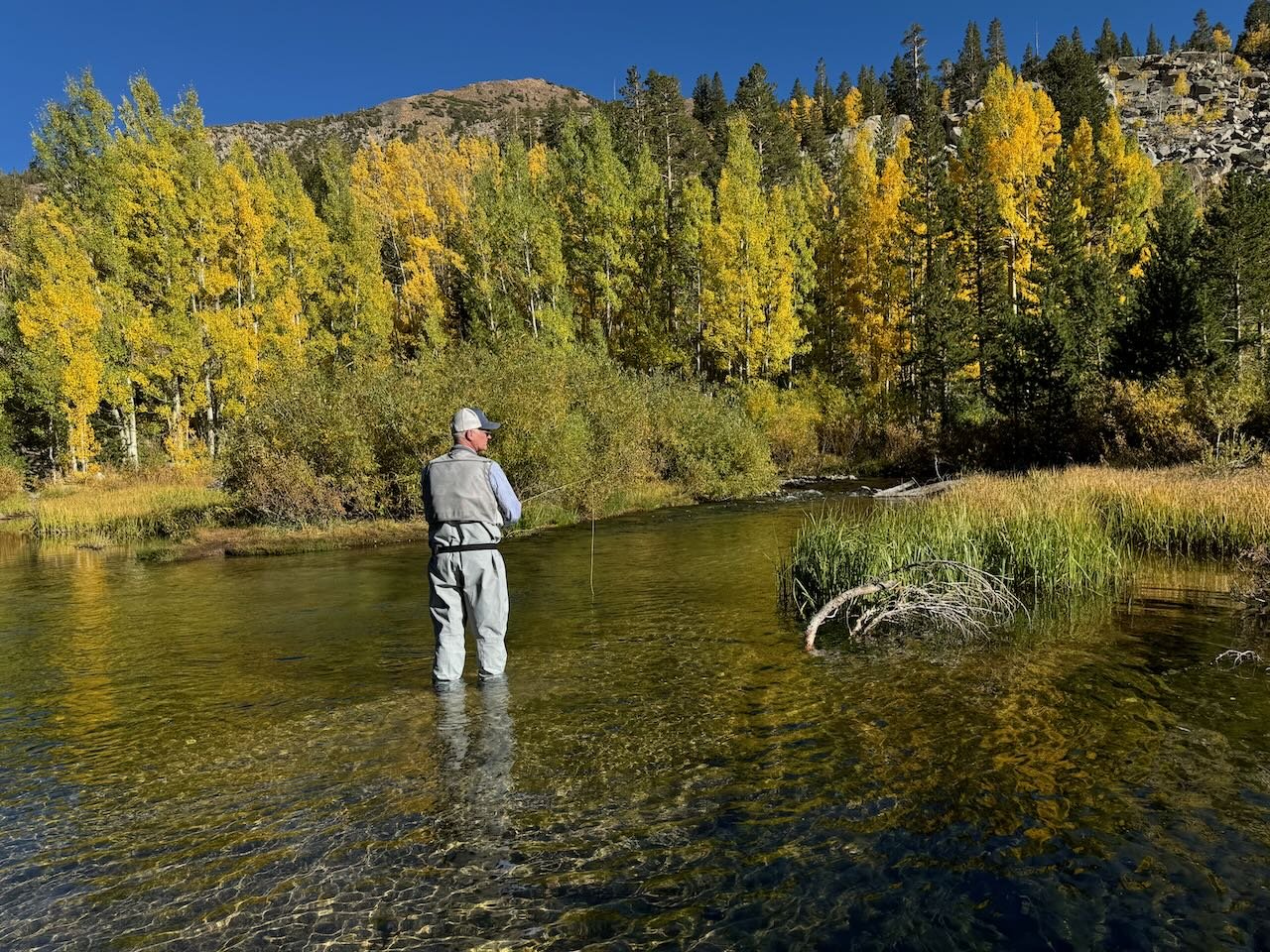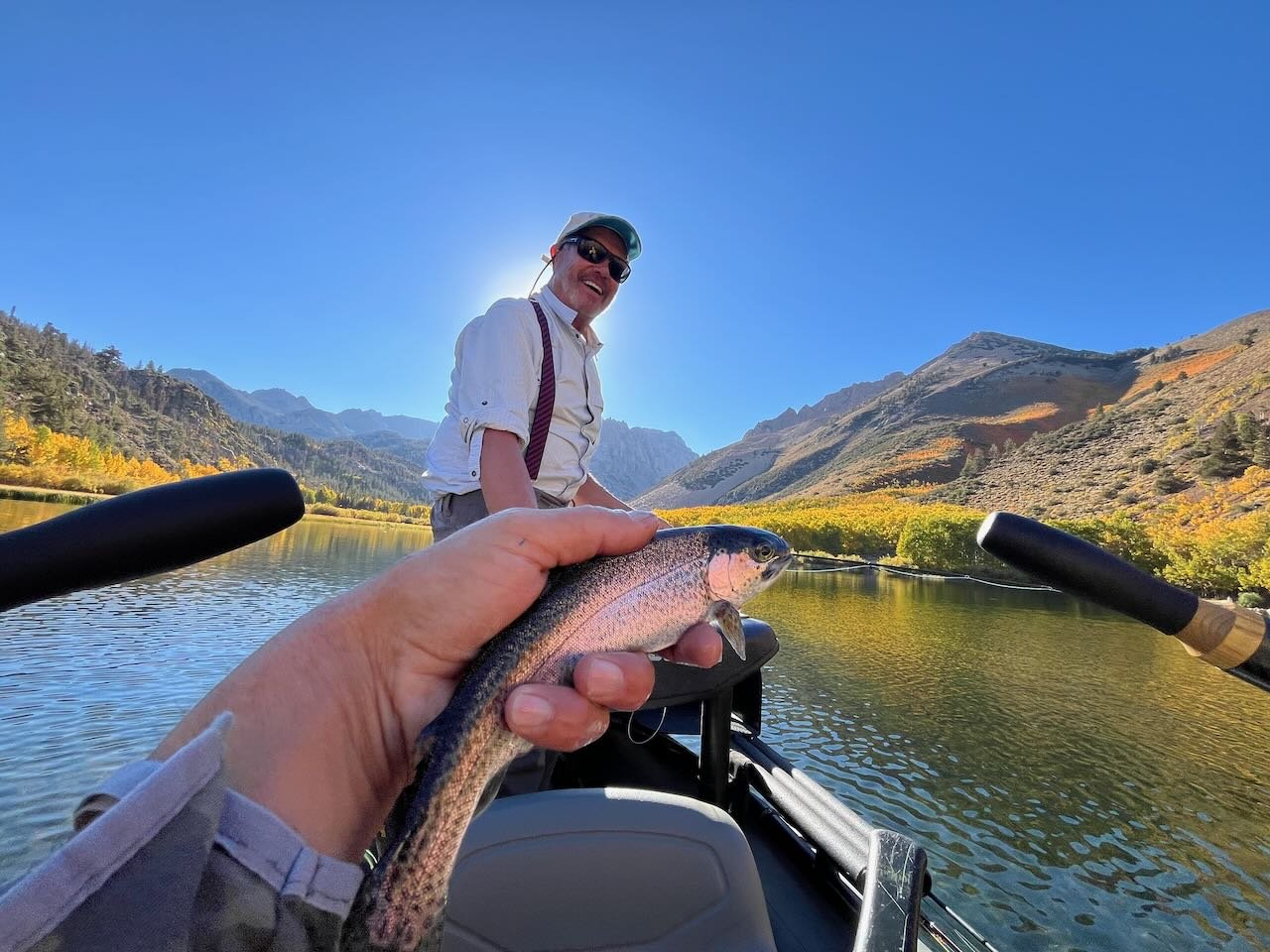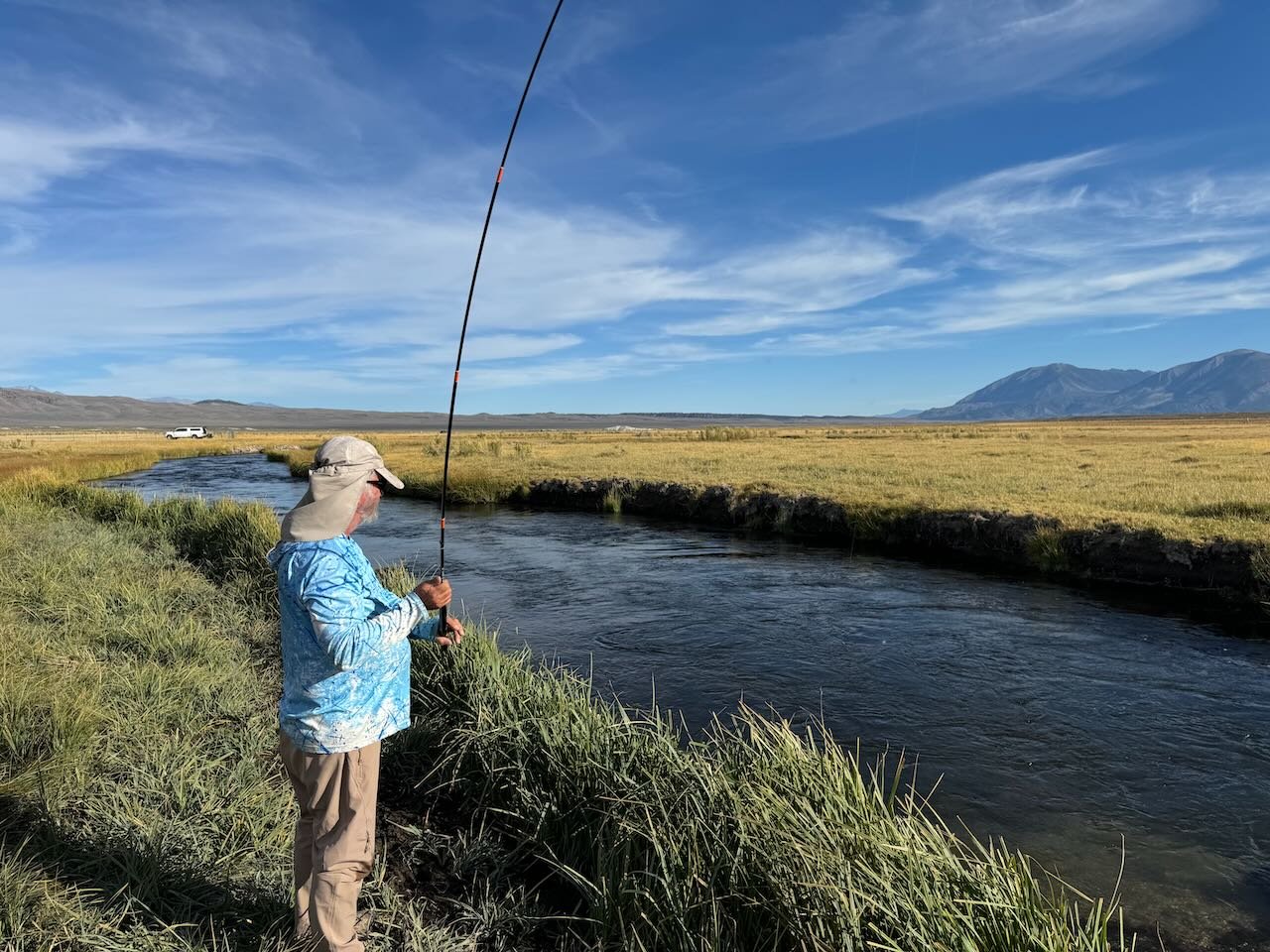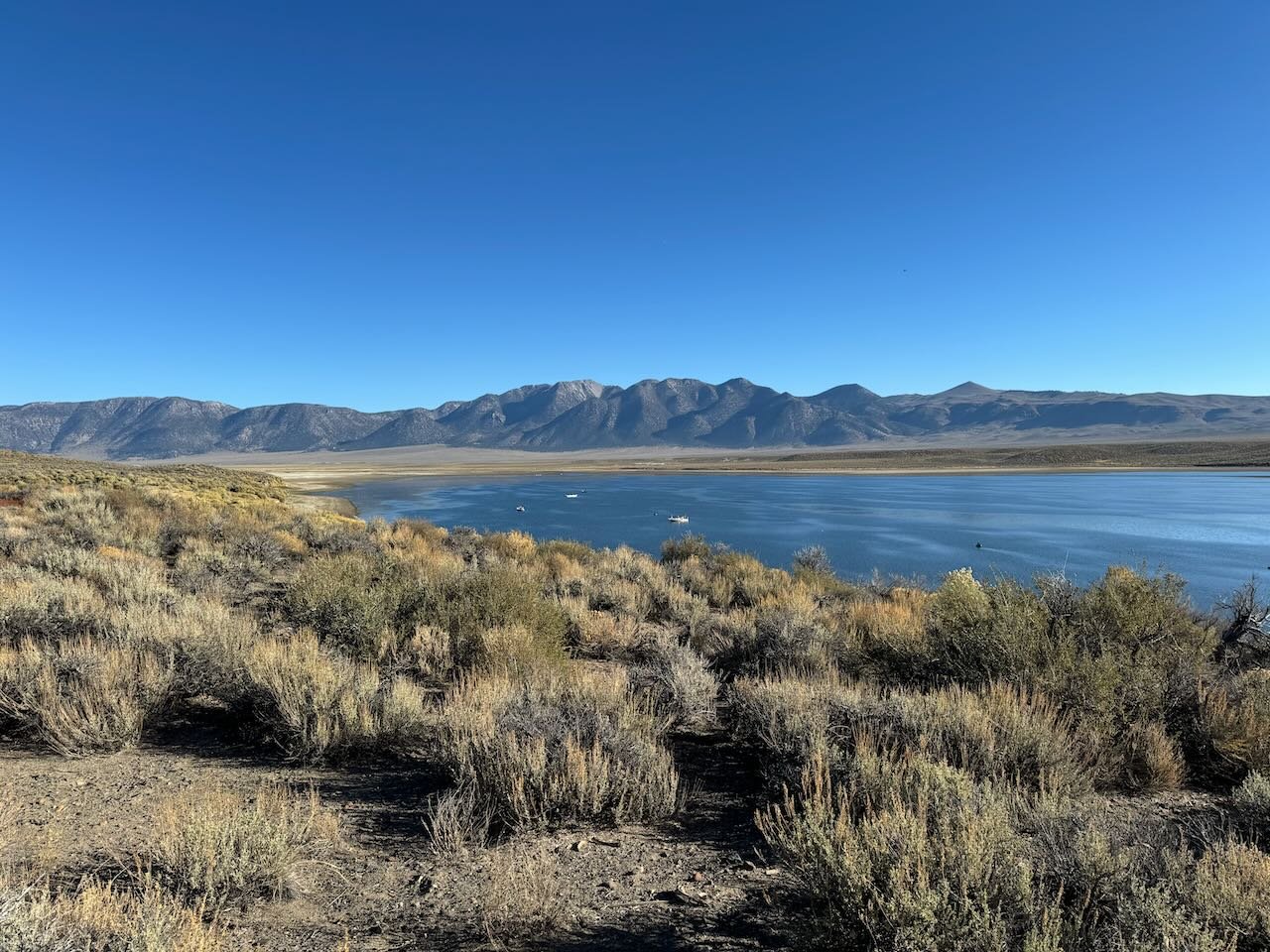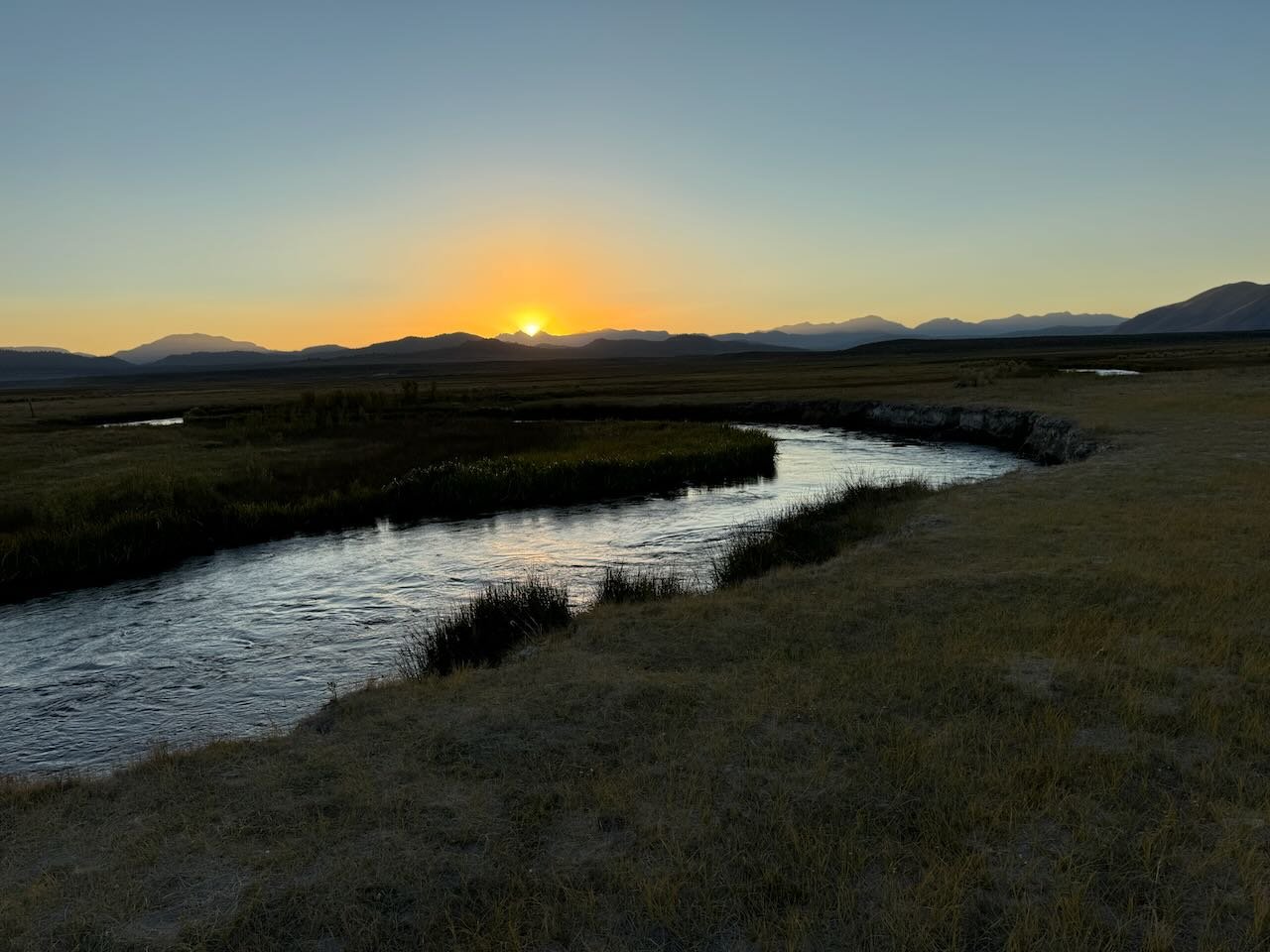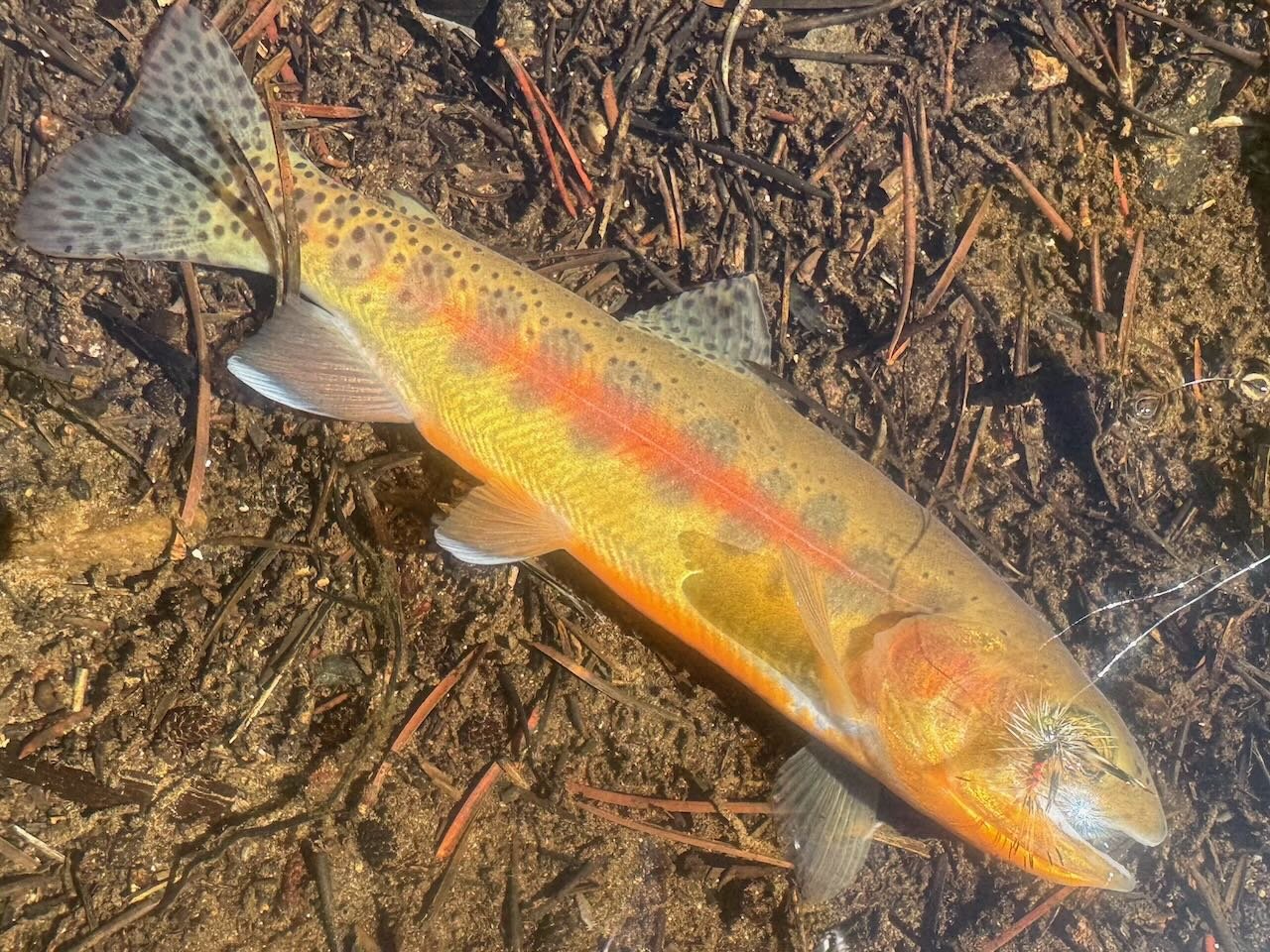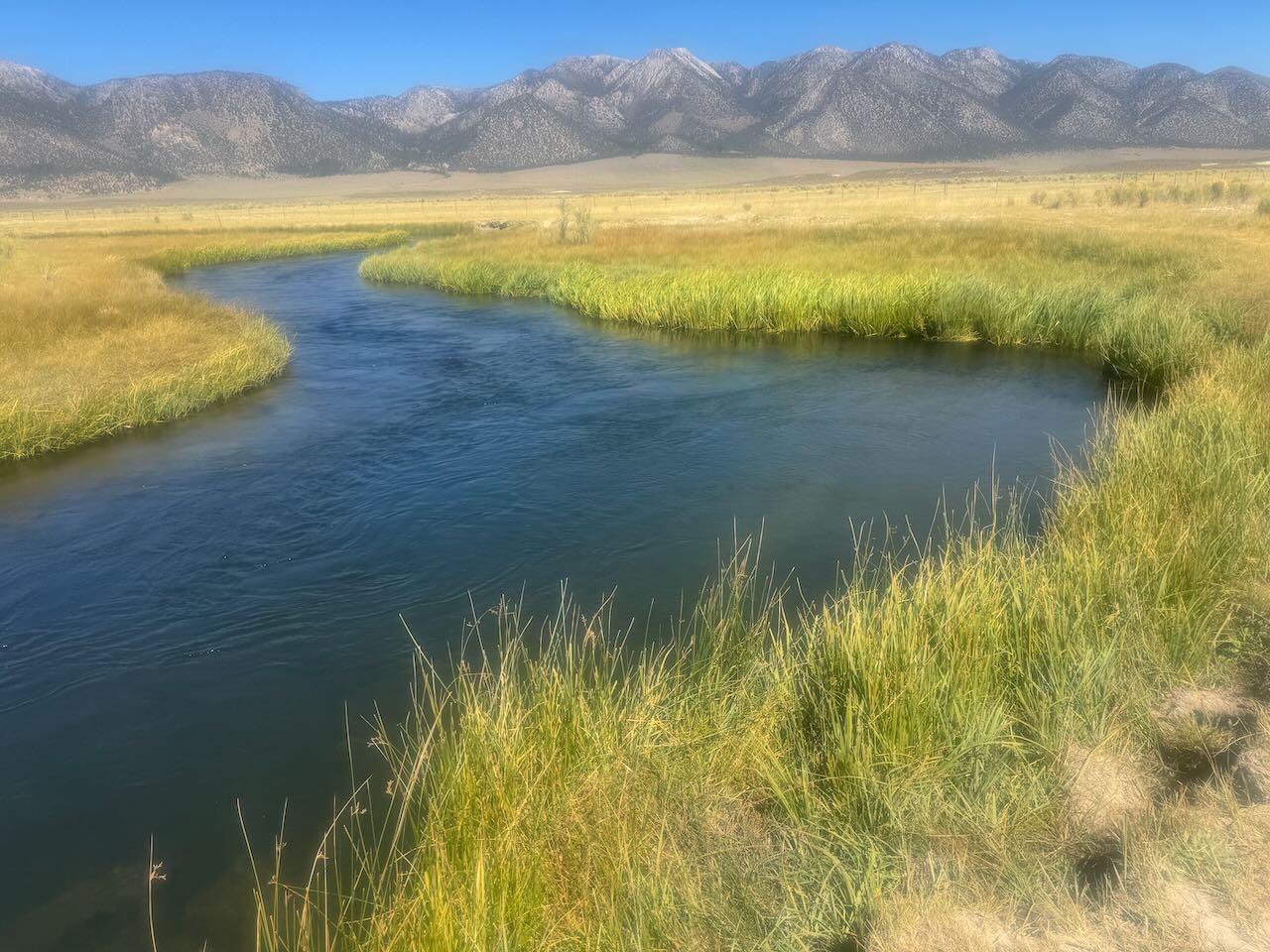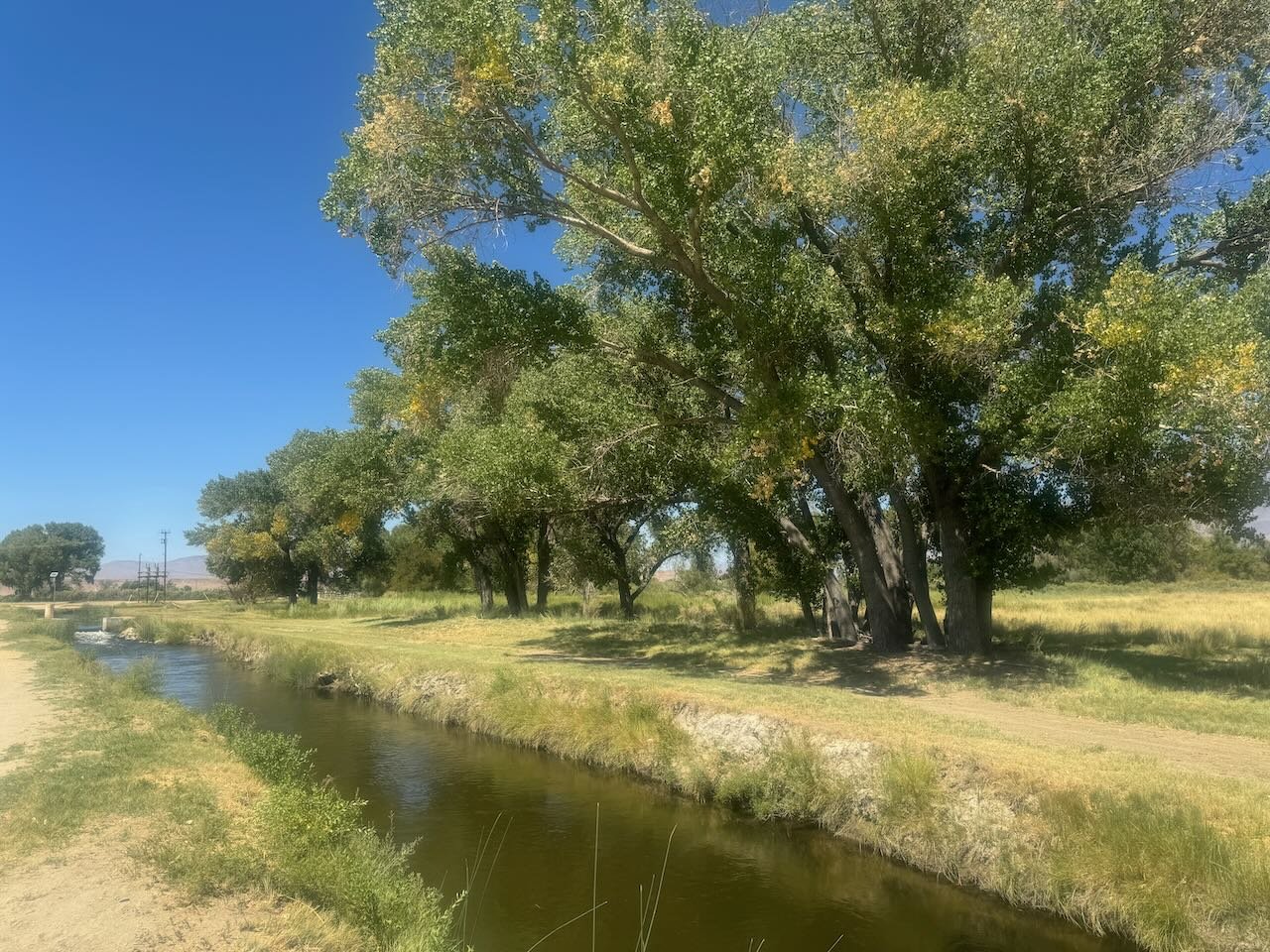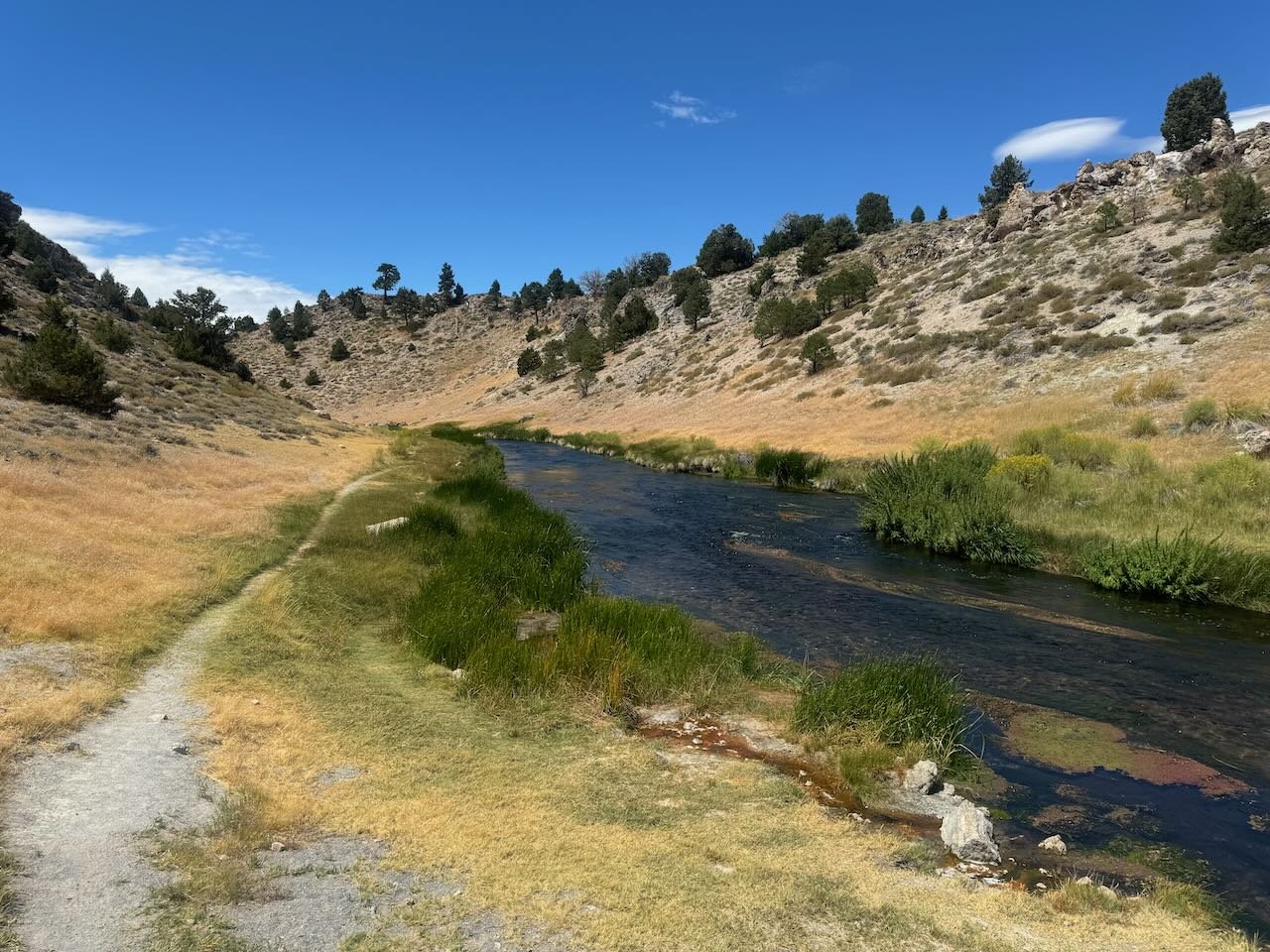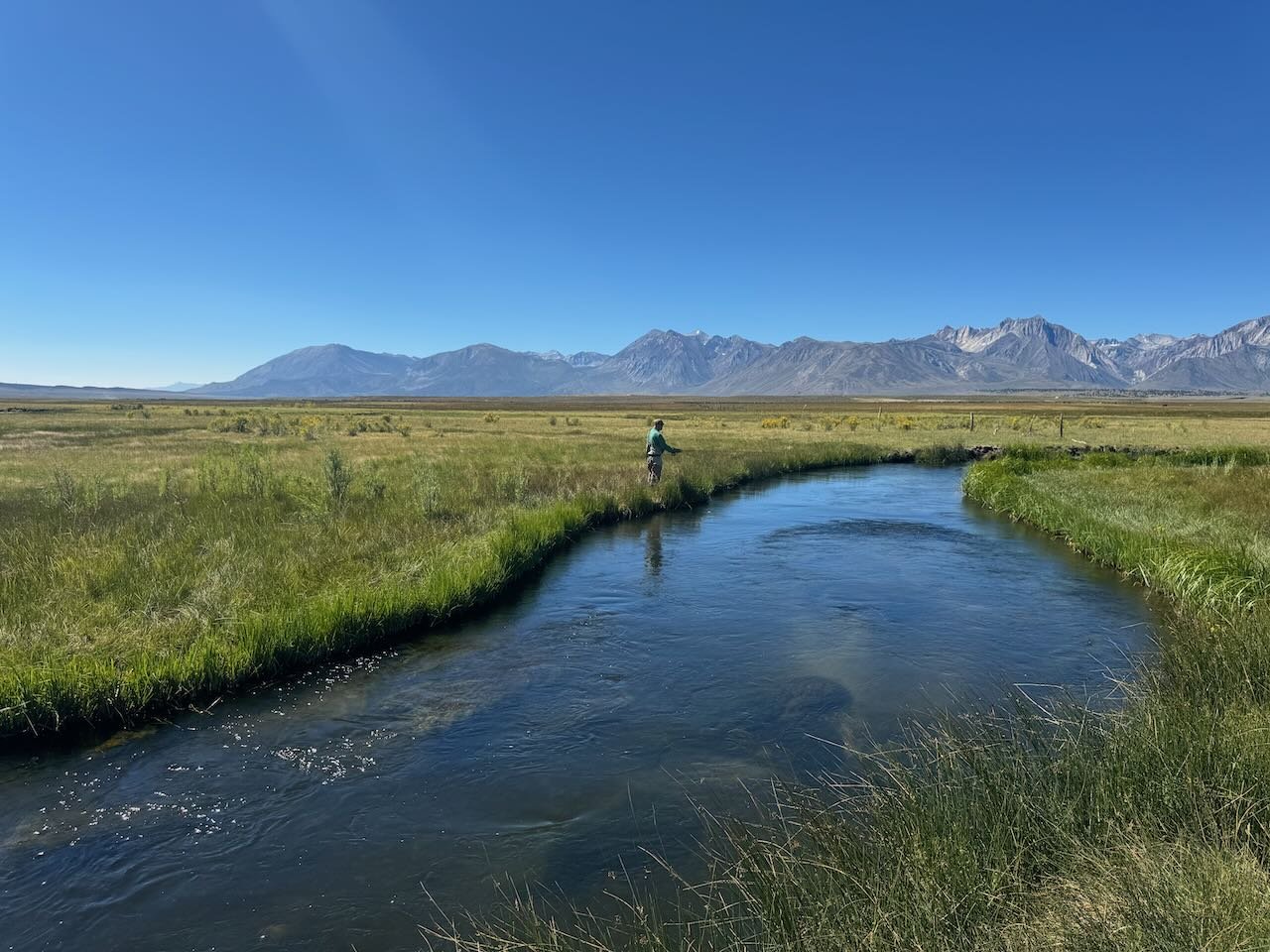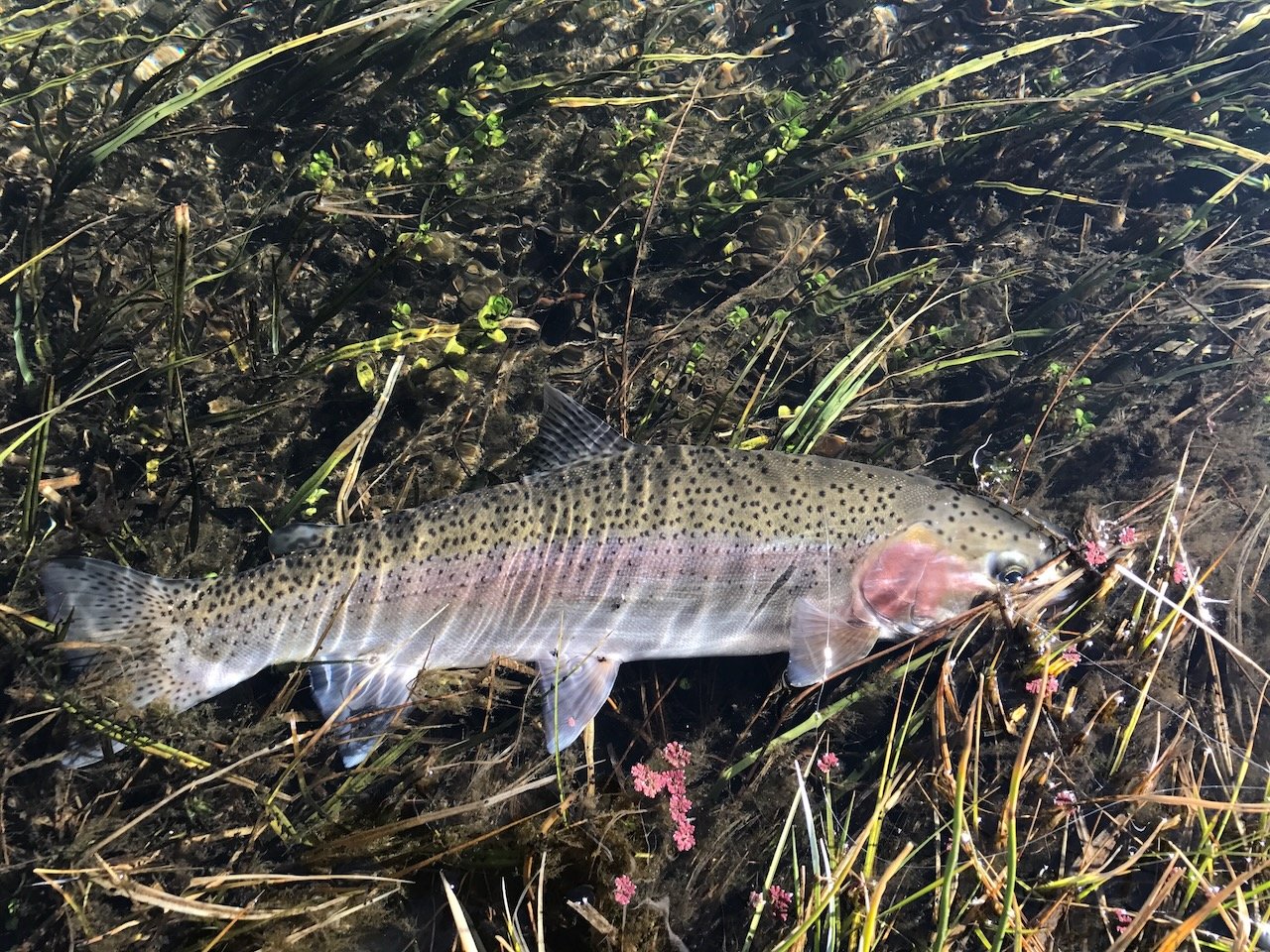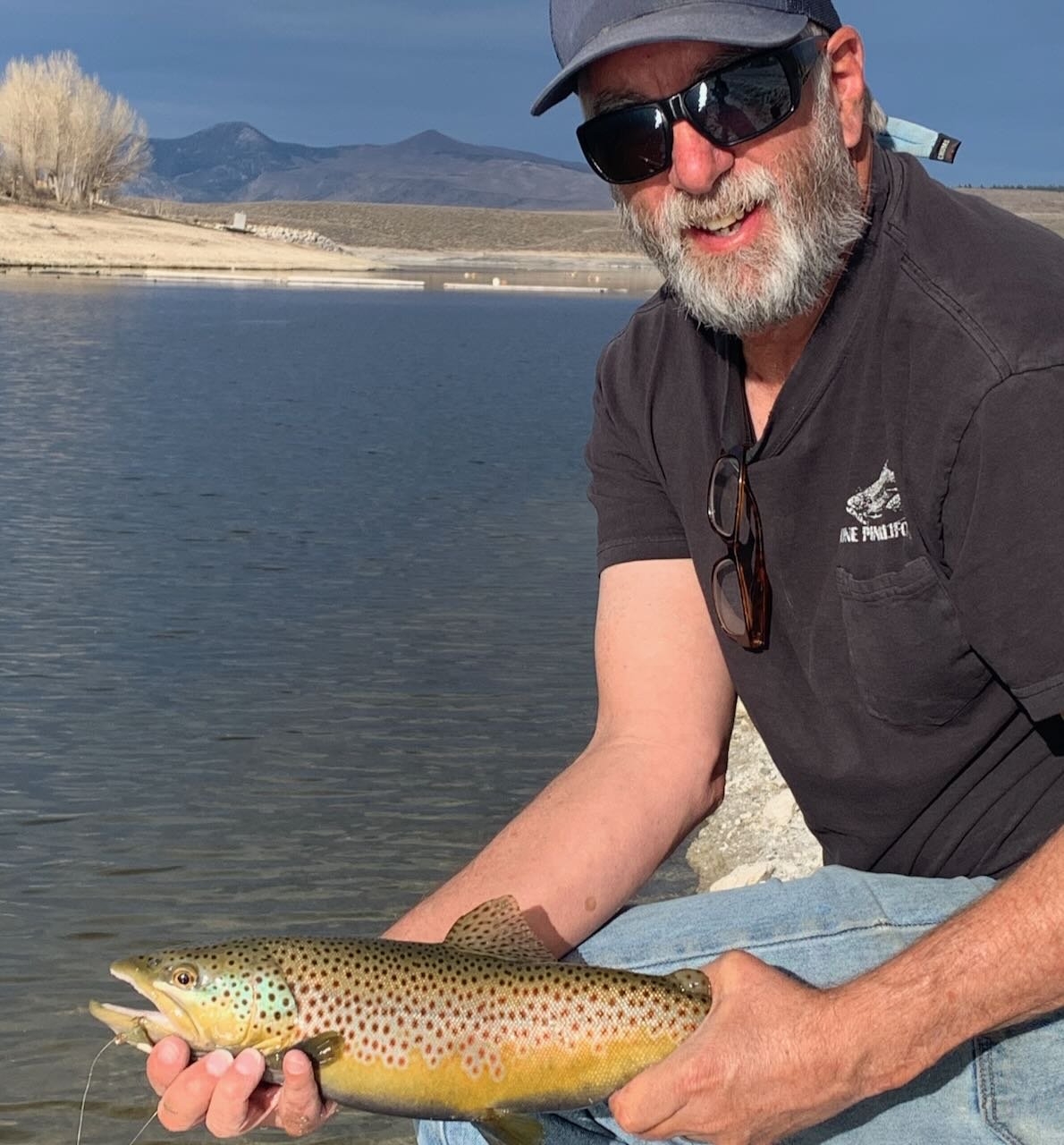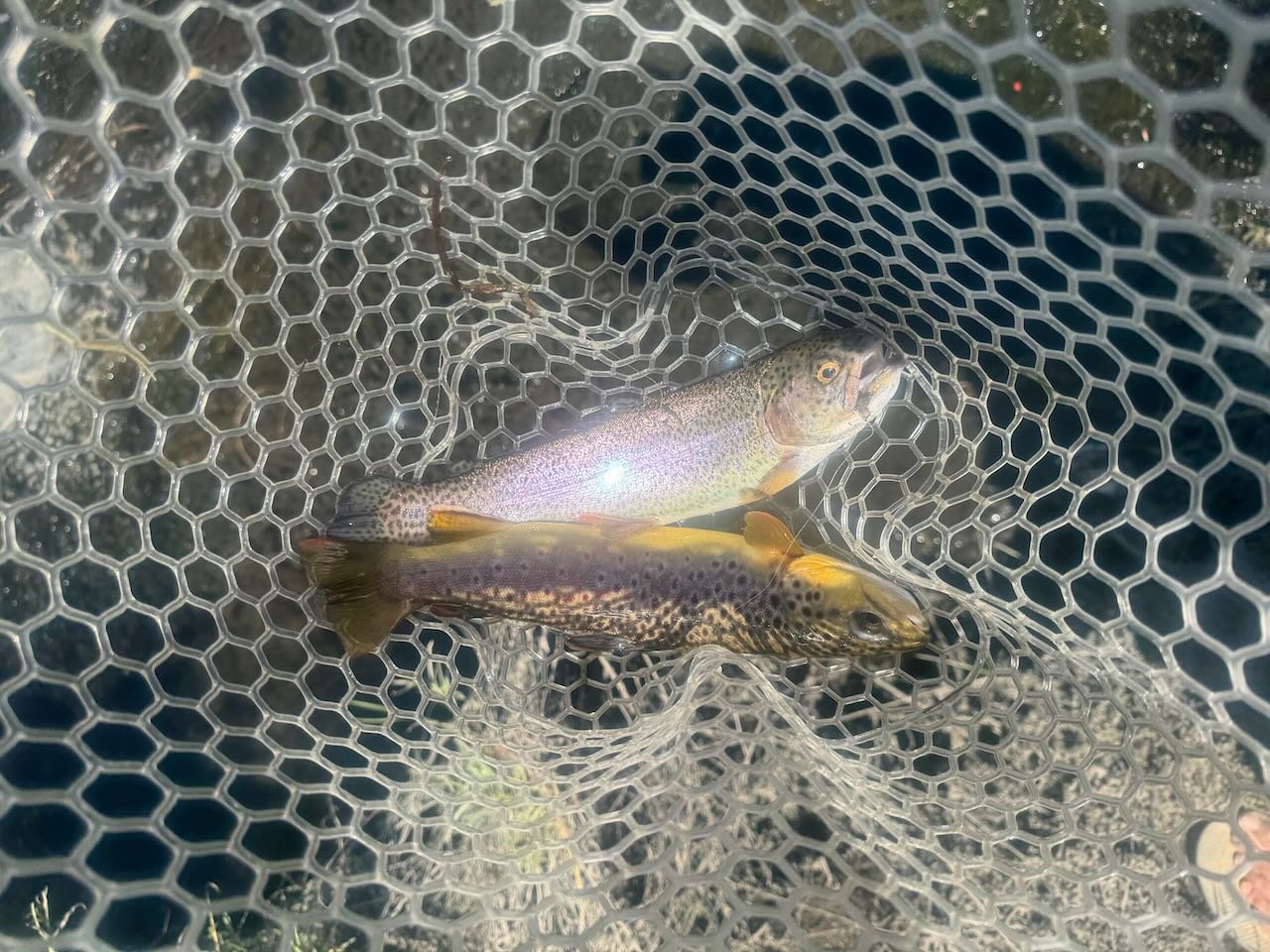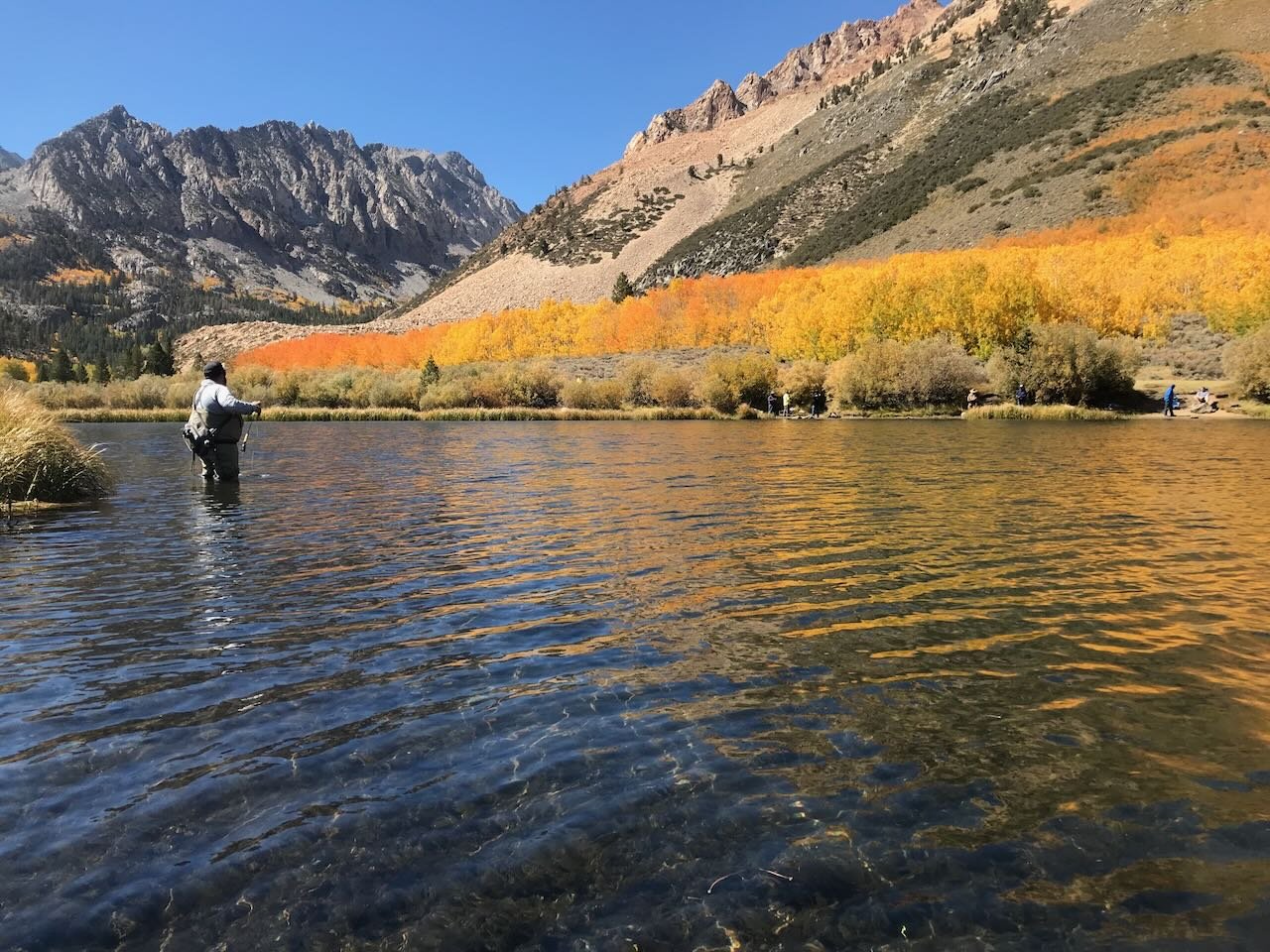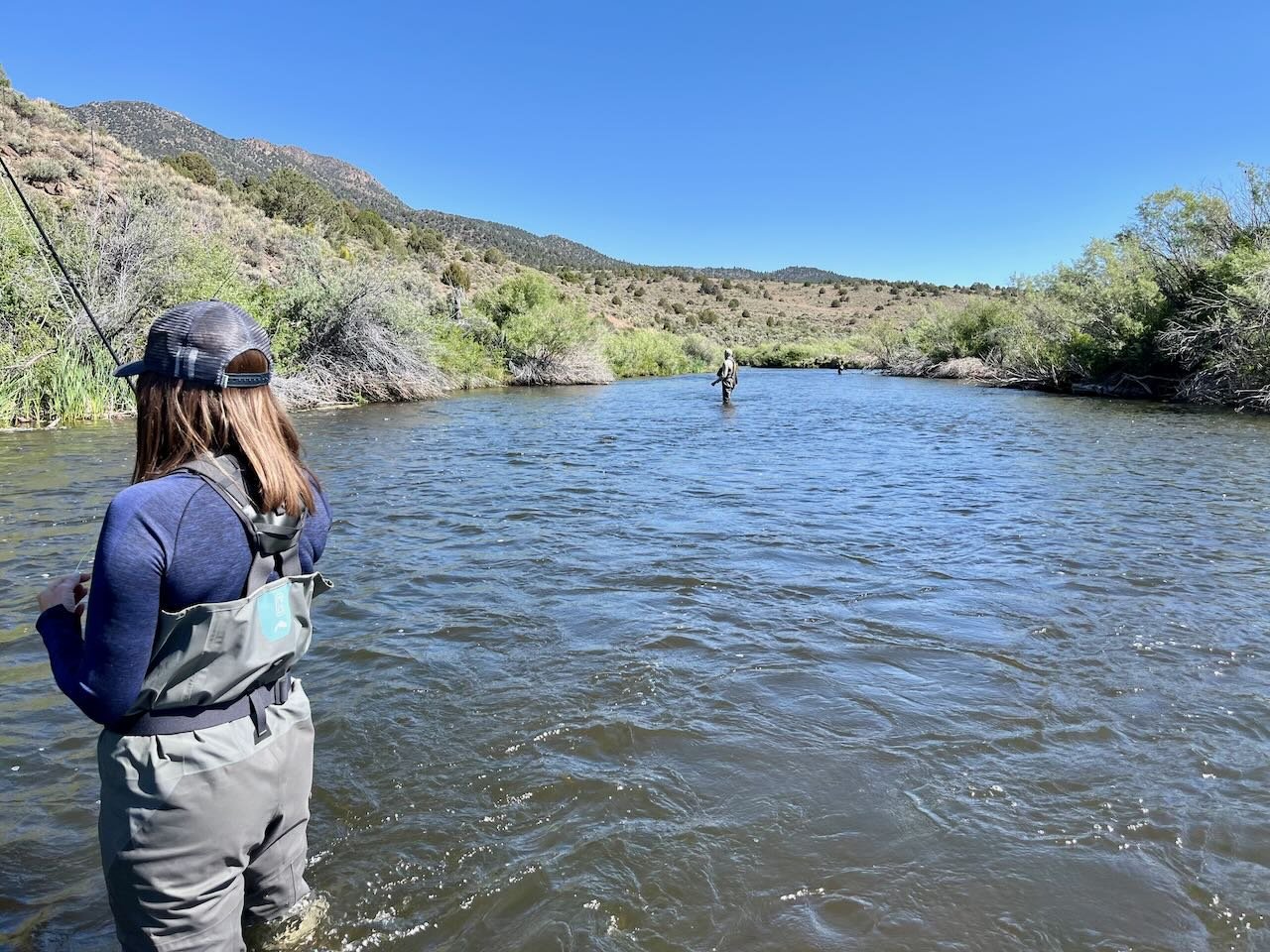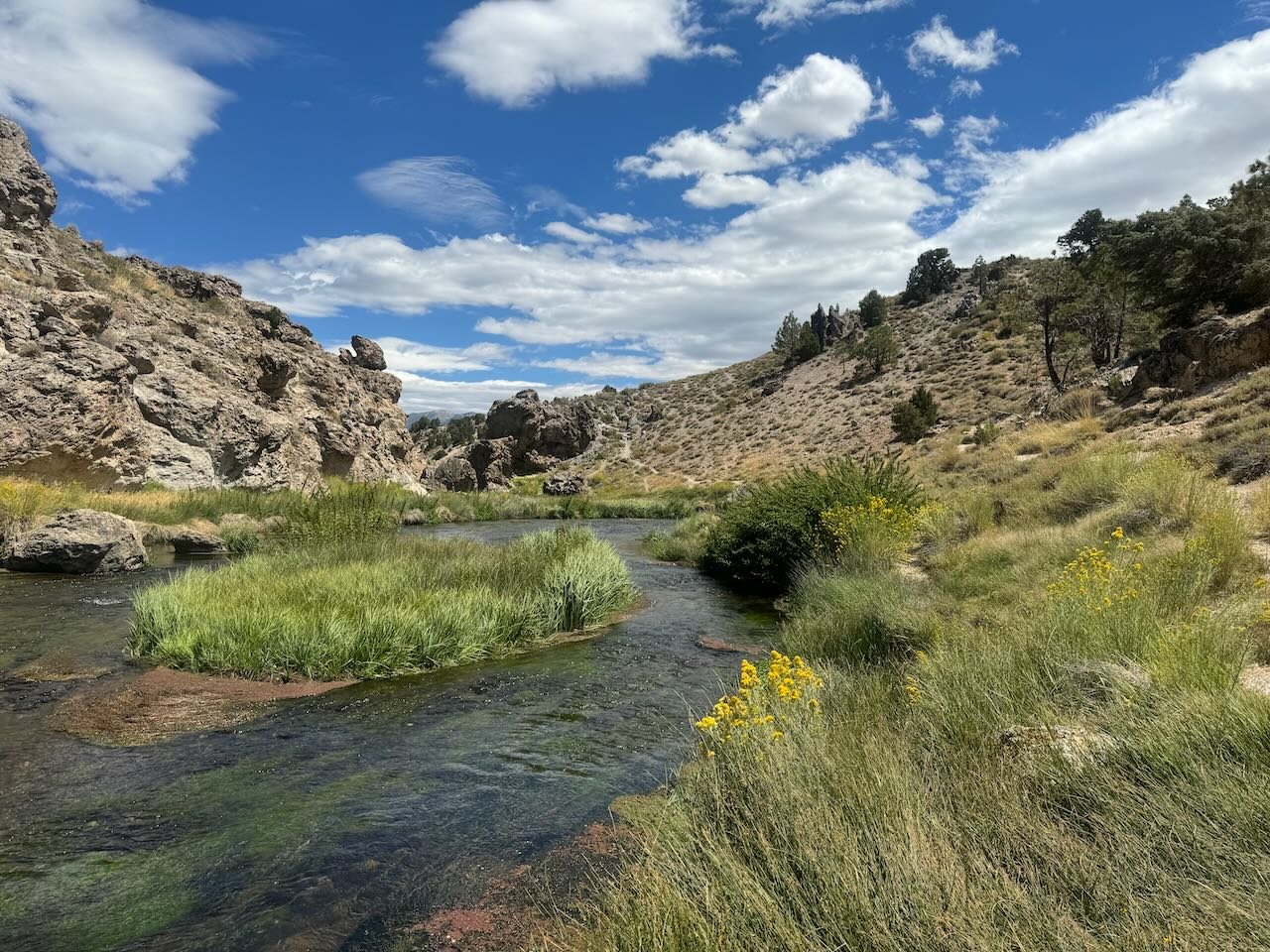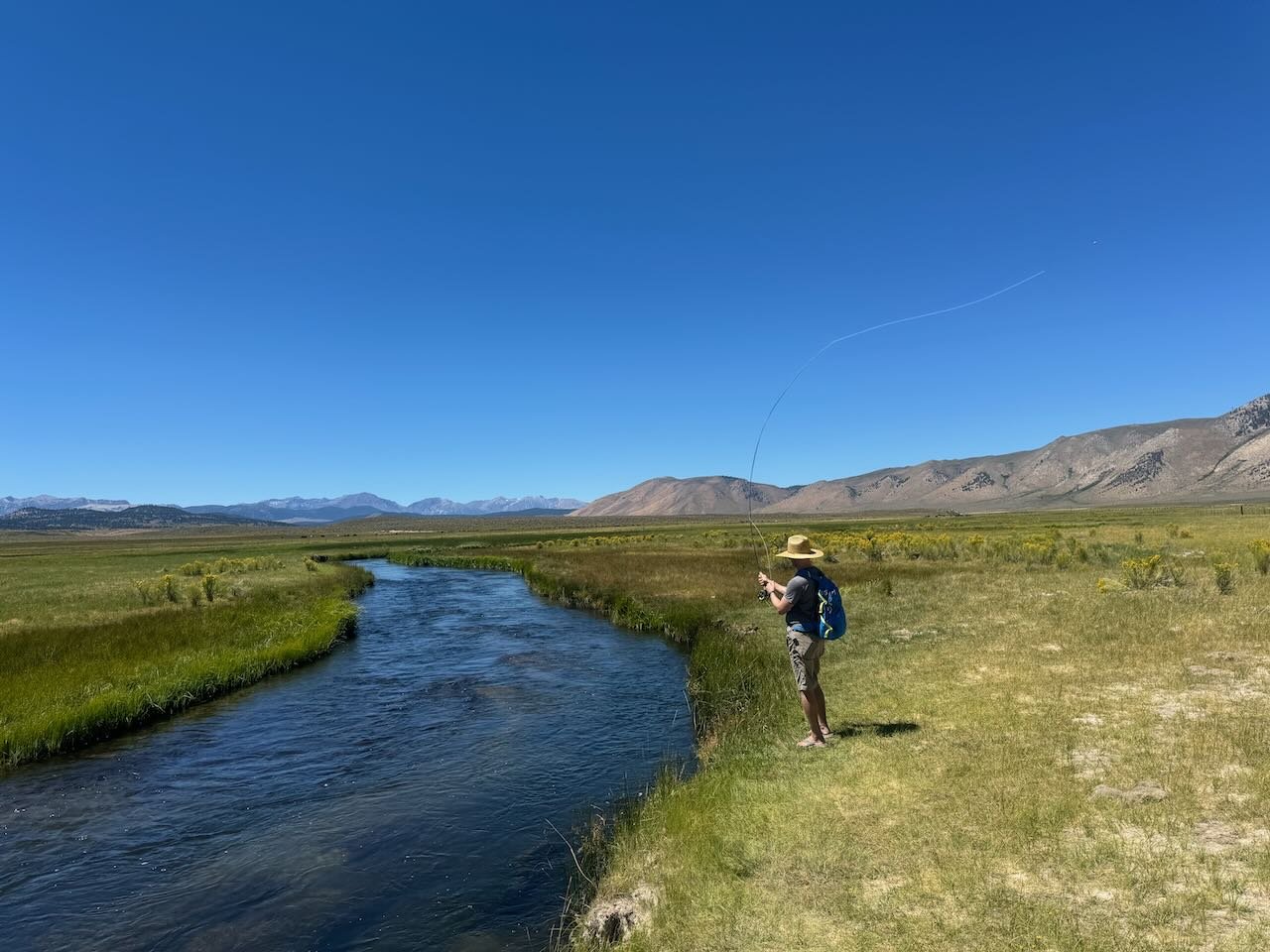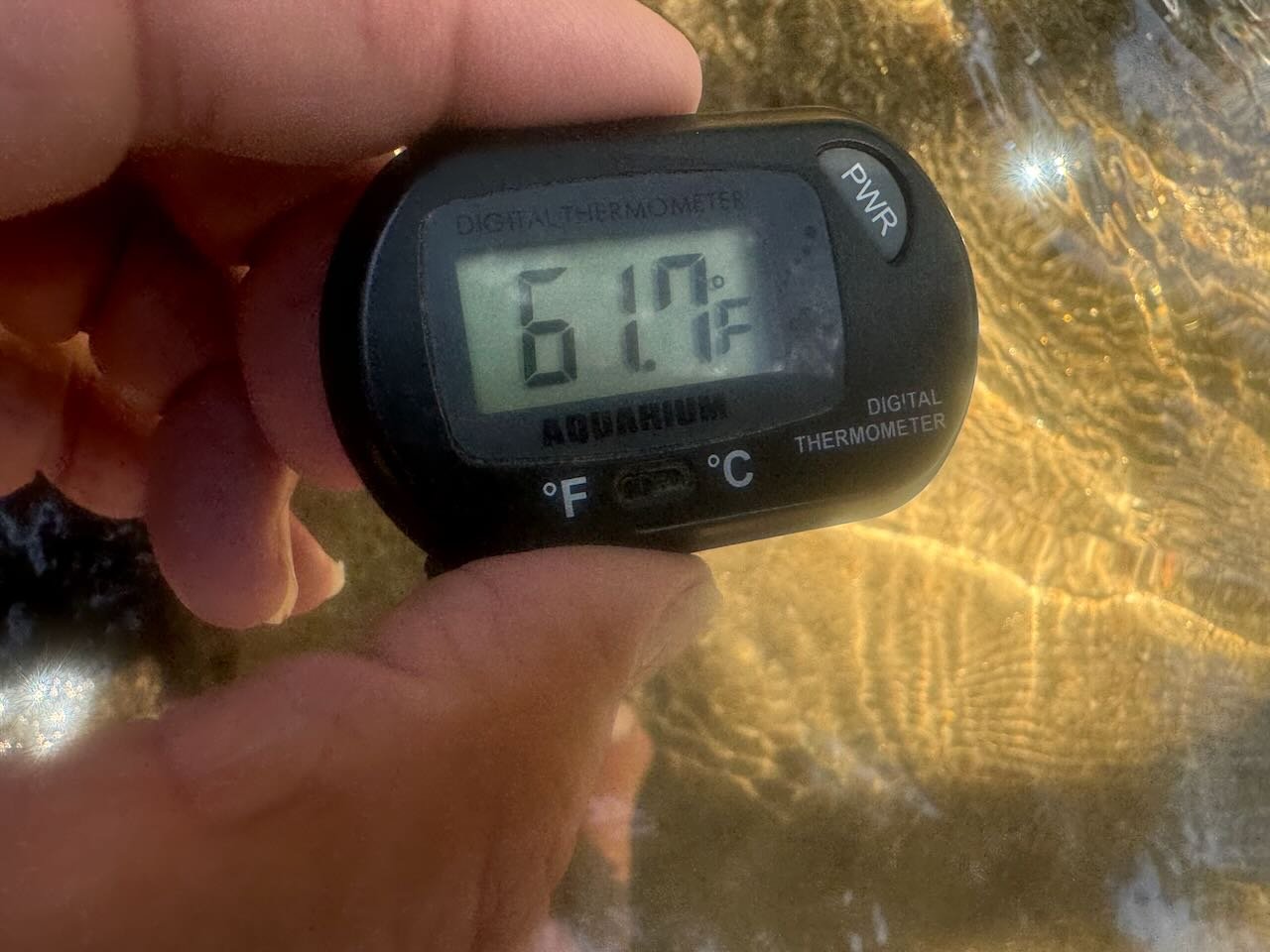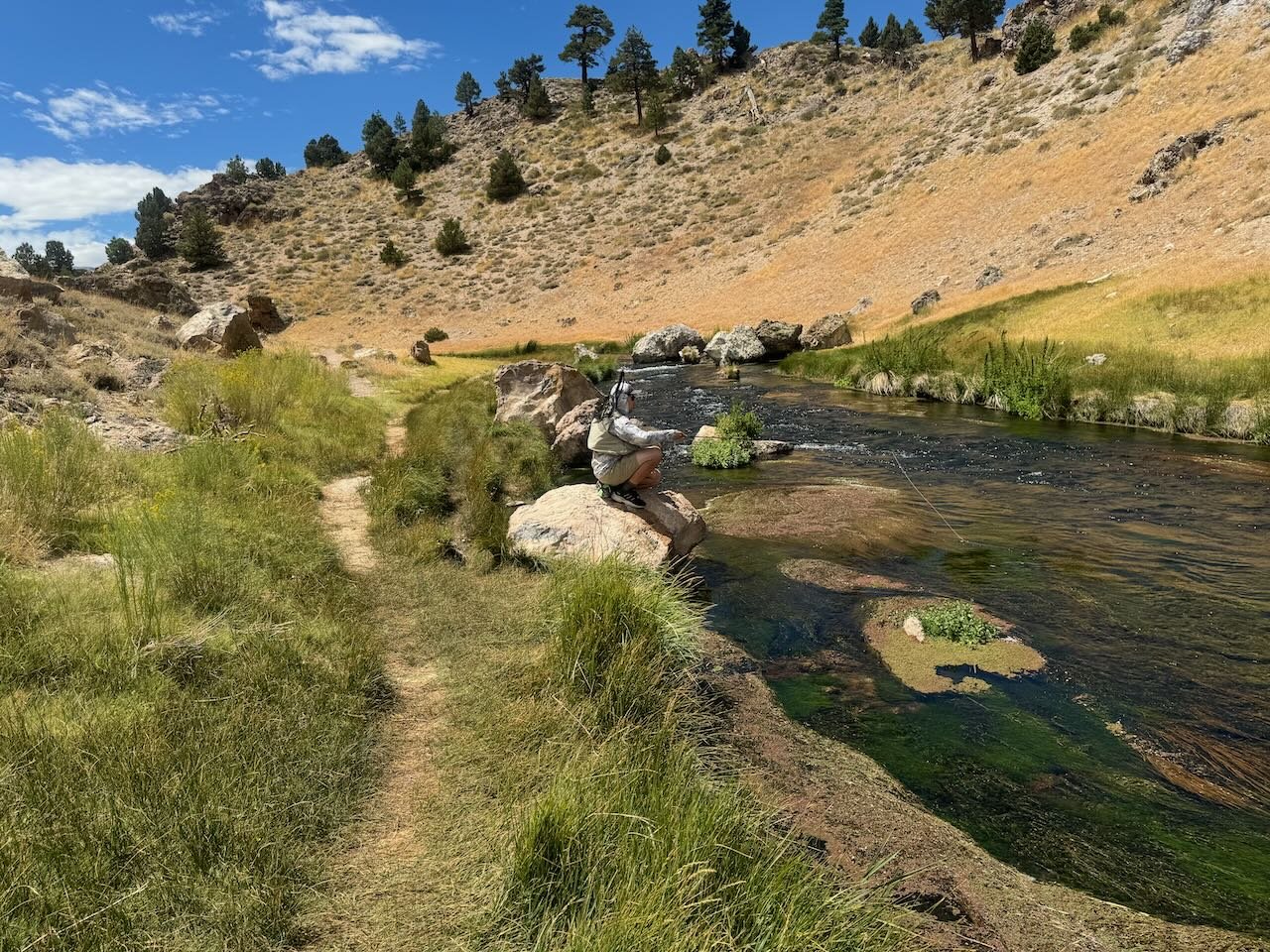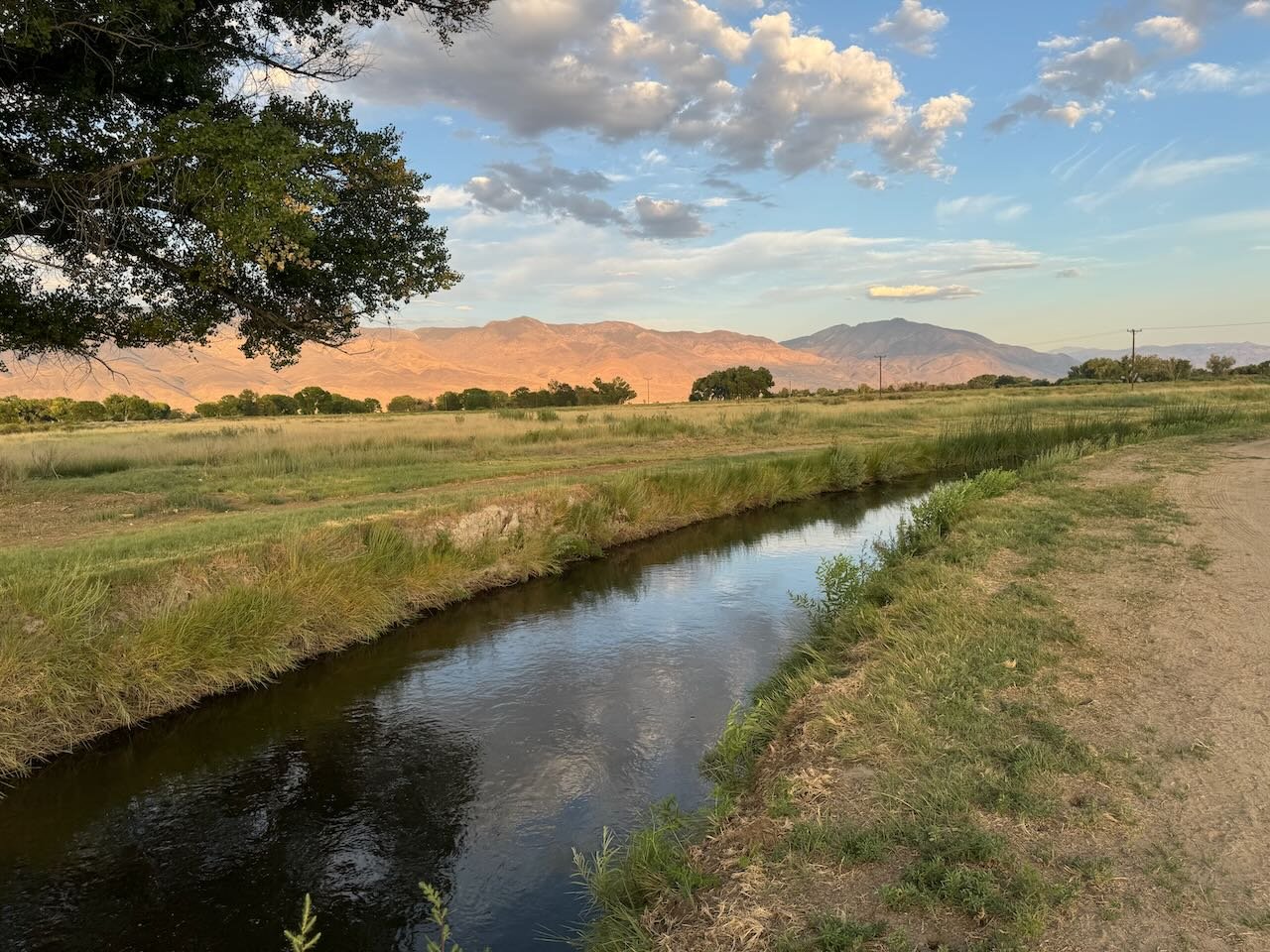We are coming to the end of my favorite month of the year SeptOct. The weather has been perfect, but it will not last long. Soon winter will be here and there will be snow on the ground. For now take advantage of the good weather and good fly fishing opportunities of fall. Hatches of midges, mayflies and caddis have the trout feeding on nymphs and dry flies. Trophy trout are looking for big meals so throwing big articulated streamers is going to entice that trophy trout to feed on your fly pattern. Fly fishing at upper altitudes is a great way to enjoy the fall colors that will quickly become just a memory.
Hot Creek
Interpretive Site:
The mid-morning trico hatch is what is bringing the trout to the surface to feed on the hatching duns and spinners. Start the morning fishing a gray elk hair caddis in size 20, a gray parachute caddis in size 20 and a size 20 gray X-caddis during the morning caddis migration. The caddis move upstream of where they have lived to lay their eggs. When the caddis migrate most caddis that land or crash on the water are fed upon by the rainbow and brown trout that inhabit the creek. The consistent dry fly hatch takes place when the trico are hatching. Start off with a trico dun parachute in size 22, a female trico dun parachute in size 22 at the beginning of the hatch. When the trico spinner fall happens it is time to be fishing with a size 22 trico spinner pattern. The trout have been taking a size 20 blue wing olive parachute during and directly after the trico hatch.
Hot Creek Interpretive Site is an easy to access hard section of Hot Creek to successfully fly fish..
Hot Creek
Canyon Section:
The weed beds make it tough to fly fish in the canyon right now. A dry and dropper is a good rig to fish with in and around the weed beds. The more open water is easier to fly fish with this rig. Working the narrow channels around the weeds will get you trout, but you will hook up lots of weeds too. Fishing with an Adams parachute in size 16, a stimulator in size 14 or a mini Chernobyl ant in size 12 are good highly visible dry flies to have on the surface. Tie on an 18 to 24 inch section of 5X fluorocarbon tippet to the bend of the dry fly with a clinch knot. To the tippet attach a size 18 bead head flash back pheasant tail nymph, size 18 olive quilldigon, size 18 Frenchie and size 18 SOS nymph to imitate the hatching mayflies.
John Carlton went old school and trolled a purple wooly bugger to fool this nice Crowley Lake rainbow trout.
Crowley Lake
Mouth of the Owens River:
The bulk of the boats have been targeting the waters off of Layton Springs. With road closures fly fishers do not have access to the east shore of Crowley Lake. If you have oars it’s a do able trip across the lake from the Green Banks launch area. Coming home in a head wind requires a lot of effort if all you are propelling yourself with is a set of fins. Trolling and casting streamers is working for fly fishers using olive, purple and black wooly buggers. Most fly fishers are doing well with midges in 10 feet of water. Albino Barron’s, blood midges, gray midges, zebra midges and tiger midges in sizes 16 and 18 fished three inches to four feet of the lake bottom are producing rainbows, browns and cutthroats to 24 inches.
Brian Chastain fooled this brown trout with a size 18 olive quilldigon fished on the substrate of the Owens River.
Upper Owens River
Above Benton Crossing Bridge:
Water flows have increased with water flows coming from Mono Basin through the Grant Lake tunnel (East Portal). These increased flows are improving the trout fishery as the trout are not as spooky as they were at the lower flows. Trophy trout are still not in the river in any concentration. Hopefully these increased flows will jump start the trout migration out of Crowley Lake. Nymphing continues to be the most productive method of fly fishing the river. Three to 12 inch rainbow and brown trout are feeding on size 18 bead head flash back pheasant tail nymphs, size 18 olive quilldigons, size 16 hot spot pheasant tail nymphs, size 14 stoner nymphs and size 18 tiger and zebra midges. There is a trico hatch mid-morning that a size 22 trico parachute dun, size 22 female trico parachute dun and size 22 trico spinner will fool the trout feeding on the surface taking the hatching tricos. Mid-afternoon a size 16 elk hair caddis worked on the surface of the river is fooling the trout looking for caddis that get blown off the stream side vegetation and into the river.
Bob Miller from Belvedere Tiburon was successful on North Lake using a dry and dropper rig while fly fishing from Richard Lancaster' s Stealth Craft drift boat on North Lake.
North Lake:
A dry and dropper rig is the way to successfully fly fish North Lake from a flotation device like an inflatable drift boat or float tube. Hatches of midges and mayflies have the fish feeding on nymphs and dry flies. Good dry flies in the dry and dry dropper rig are size 16 Adams parachutes, size 14 olive stimulators and size 14 elk hair caddis. These are all high visible flies on the surface. For the nymphs tiger midges, zebra midges and blood midges in size 16 or 18, bead head flash back pheasant tail nymphs in size 18 and bead head flash back gold ribbed hare’s ears in size 16 are fooling the wild browns and stocked rainbows. Throwing an olive wooly bugger or trolling it produces good numbers of the stocked rainbows.
The inlet to Weir Pond is a great place to catch trout on a dry and dropper rig.
Bishop Creek
South Fork at Weir Pond:
Fall colors have peaked, but are still a great back drop to fly fishing on south fork of Bishop Creek at Weir Pond. The brook trout are in the pond in good numbers and are willing taking nymphs and dries. I’ve been fly fishing with a size 16 Adams parachute and a size 16 bead head flash back gold ribbed hare’s ear two to three feet under the Adams on 5X fluorocarbon tippet. Browns, rainbows and brook trout are taking both flies. Once the sun goes behind the mountains make sure your jacket is not far away as it’s getting cold at night at the upper elevations.
New fly fisher Sora Shim used a bead head flash back pheasant tail nymph fished under an indicator to hook a few rainbow and brown trout on Bishop Creek Canal.
Bishop Creek Canal
Behind Bishop Veterinary Hospital:
Bishop Creek Canal is a great place to learn how to fish nymphs under an indicator. The key to success is setting the hook on any movement in the indicator. You may think you are just bumping the bottom with your fly, but you will be surprised how many of those subtle movements in the indicator are actually a fish. A size 18 olive quilldigon, size 18 bead head flash back pheasant tail nymph and size 18 tiger or zebra midges fished six feet under an indicator is fooling the stocked rainbow trout and the wild brown trout.









